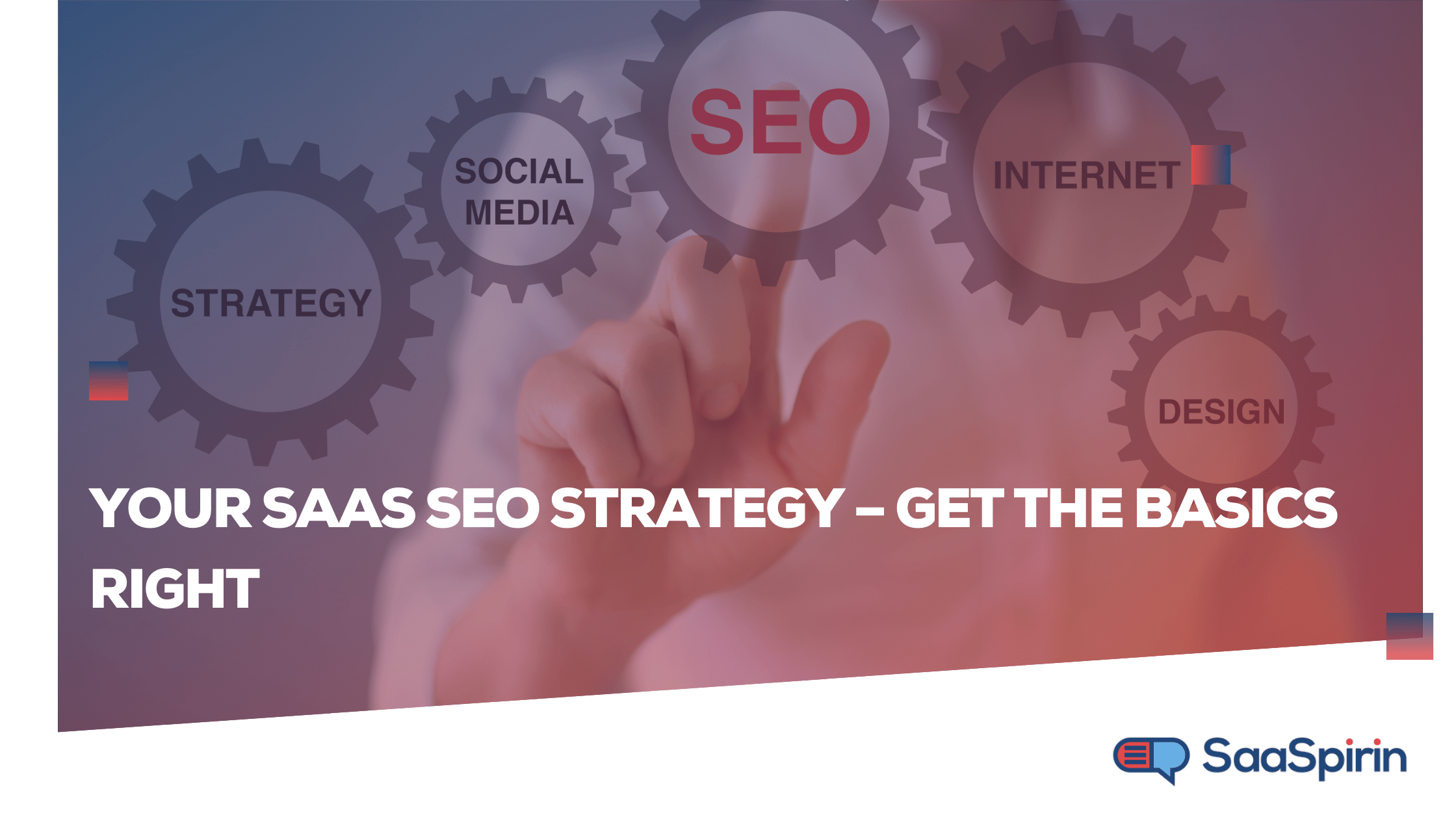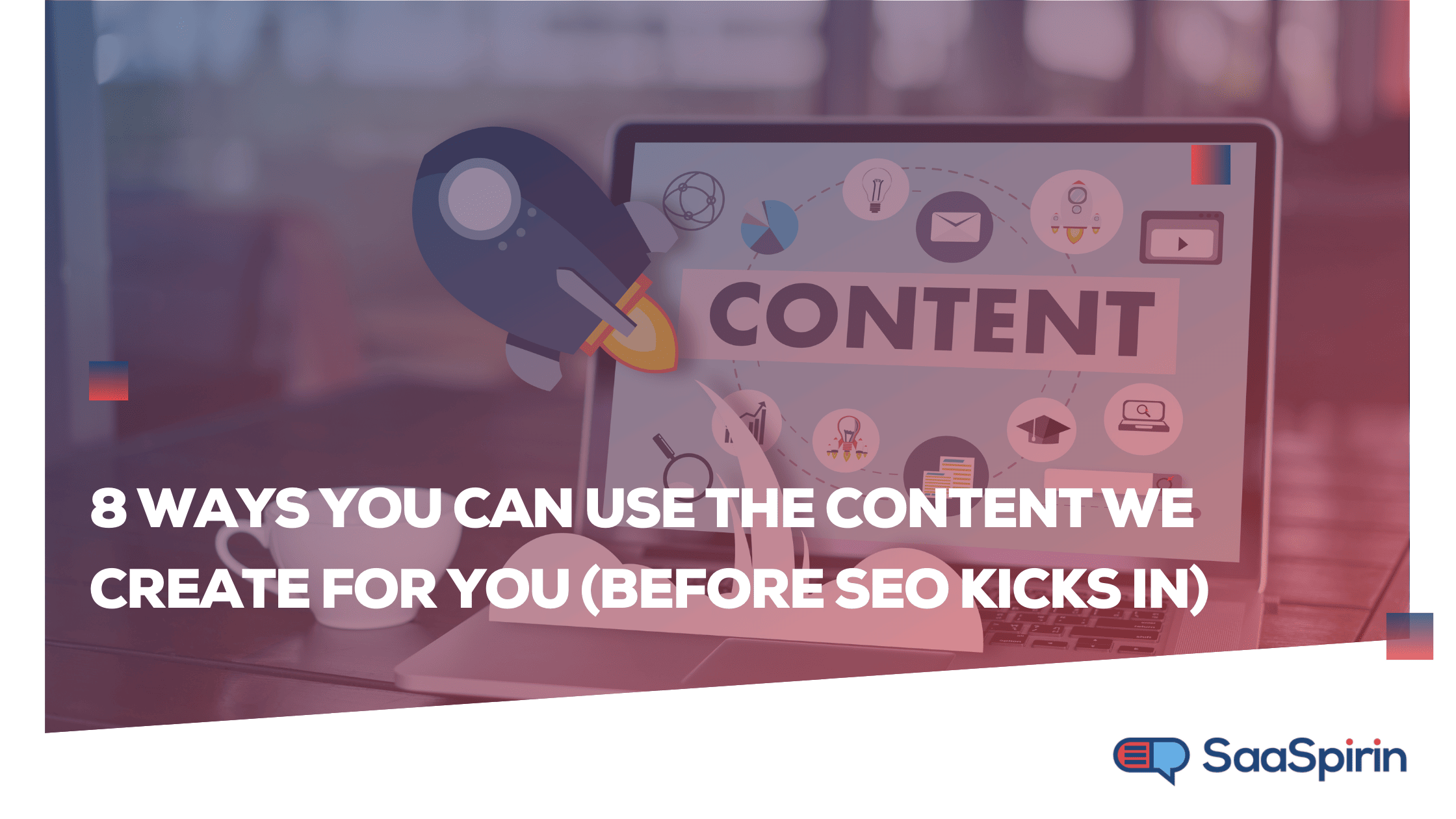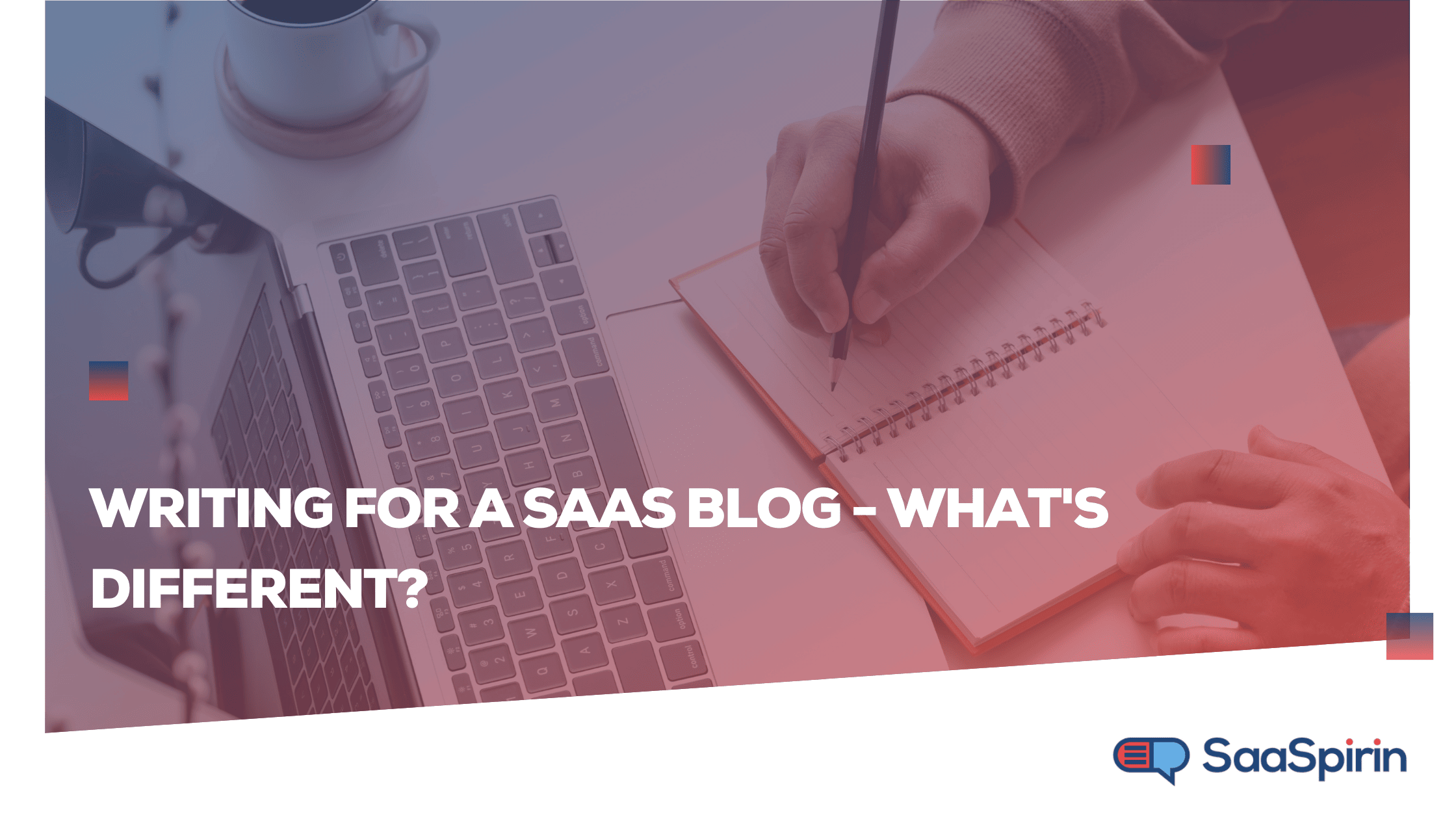Your SaaS SEO Strategy – Get the Basics Right
By Nicolas Jacobeus on May 21, 2021

We asked 16 SEO professionals who work with SaaS companies for their best advice when it comes to laying the groundwork in SaaS SEO strategy. They cover what you need to know in the following sections:
- Plan your investment
- Get to know your customers
- Choose effective keywords
- Create and optimize content
- Optimize user experience
Plan your investment
1. Establish a baseline
“Before you begin any SEO campaign for your SaaS business, taking stock of your current online visibility is essential. This can be done through an online search engine analysis or by conducting a competitor research report. This includes assessing your website's current ranking. Understanding your current baseline can help you prioritize your efforts and develop an actionable plan for improving your rankings. Once you know where you stand, it’ll be easier to create strategies that target the areas where you’re truly struggling.”
- Johannes Larsson, Junis Group Ltd
2. Determine what you can invest
“SEO for SaaS businesses is never an overnight success. It’s definitely not a sprint, and it’s always a long marathon that consumes time, money, and a great deal of effort. Your competitors are probably way ahead of you in SERPs right now; they have a stronger domain, more referring domains, more crucial backlinks, and an established brand identity.
If you want to build a prosperous SaaS business, working toward achieving top positions at SERPs, you have to deeply analyze your rivals and ask yourself: Do I have enough resources to deal with them long-term?
I was working with three SaaS companies, and two of them were not prepared to compete for crucial keywords with their main business rivals. They wasted money and time for nothing. Making sure you have enough time and resources invested into your SEO strategy is of utmost importance. If you don’t, nothing else matters.”
- Tomasz Bartczak, PhotoAiD
3. Set your expectations for results
“The first primary step to starting a SaaS SEO Strategy is beginning with understanding how much revenue you want to achieve out of an engagement. This is because it will help you determine the customer intent and what content is needed to drive that traffic to your site. Outlining these goals will help you organize your SaaS SEO strategy plan and pave the way for successful SEO.”
- Tracey Beveridge, Personnel Checks
Read: Blog Goals - How to Set Realistic Growth Targets
4. Determine in-house or agency talent
“Before you create a SaaS SEO strategy, you'll want to consider the benefits of hiring someone in-house vs. hiring an agency. Having a dedicated team member that focuses on SEO can lead to faster and less expensive results, but SEO is a massive tactic that is constantly changing. The expertise of an agency may prove to be beneficial. Before you create your SEO strategy, determine if you'll hire a full time equivalent or a 3rd party to do the work.”
- Logan Mallory, Motivosity
Read: When to Outsource Content Marketing and When to Keep it In-House
Get to know your customers
5. Identify your ideal customer
“You can better meet the needs of your ideal customers if you know who they are and what they look like. You have two options when it comes to creating a buyer persona. You can begin to discover your ideal customer by conducting market research from the ground up. It is also possible to repurpose previously collected client data. For a better understanding of who your customers are, you'll need a lot of information.”
- Scott O'Brien, PPC Ad Lab
6. Analyze buyer personas
“The basic thing to do before designing a SaaS SEO strategy is to take care of the strategic background. This helps make sense of what content builds value for our potential customers, and how we want to speak to them. The best tool for developing a strategic background for a SaaS product is the Buyer Persona Canvas, where we segment our customers into Personas that we then break down in a workshop format, often retrospectively or derived from customer database analysis.
A Buyer Persona Canvas is the way we know what problems our audience faces, what kind of people they are, and how to speak to them. This is the best basis for creating content pillars and launching a SEO strategy with prioritization based on keyword potential and traffic quality.”
- Jakub Ziecina, Bouncer
7. Know what your customer wants
“You see, when creating any kind of SEO strategy, there are many factors that come into play: content, keywords, links… the list goes on. And while these elements are important, they aren't the only things that matter when creating a strong SEO strategy. A lot of times what’s more important than all of that is to understand who your audience is and what they want from you.
If you don't know who your users are and what they want from your product or service yet, then how can you expect to build an effective SEO strategy? You can't! So before anything else, take some time to figure out what your customer base is and what those customers want from your website or app. The more information you have about them upfront, the easier it will be to help guide them through this process with ease so that your marketing efforts pay off big-time in ROI.”
- Ishu Singh, Starting to know
8. Study the buyer's funnel
“Before creating a SaaS SEO strategy, think about your buyer's funnel. It looks something like: 1) Problem Unaware, 2) Problem Aware, 3) Solution Aware and then 4) Product Aware. Understand which topic fits where in the journey of the buyer. Content can help you move your buyers through each stage of the funnel, from step one, Problem Unaware to the final step, Product Aware. Once you have a solid understanding of this flow, it'll be that much easier to build an effective SaaS SEO strategy.”
- Madhav Bhandari, Early Stage Marketing
Read: The SaaS Sales Funnel and Your Blog
Choose effective keywords
9. Target keywords that will yield traffic
“For SaaS companies, as well as B2B more generally, it's crucial that you are targeting the correct keywords to drive material business.
A few years back, I was approached by a SaaS firm that needed help. They presented me with a list of what they said were their most important keywords, and asked if I could help their site rank for them. I answered, ‘Yes, I certainly can, but it won't do you any good. The keywords you're targeting are not being searched by anyone.’
It wasn't just low traffic, which can work in certain cases. It was ‘no’ traffic. I was able to help them with a bit more creativity on keyword generation, and then we set up a paid search campaign to prove them out before beginning traditional SEO efforts.”
Brian Combs, ionadas local LLC
10. Make sure keywords align with user intent
“Oftentimes, SaaS companies will use internal lingo throughout their website without consideration for user search language. This means that the keywords a user might be using to search for their offering are different from the keywords and language used throughout the site. Because of this, Google may not reward the site with rankings for those keywords as it doesn't find the site to be particularly relevant to the user queries.
By first researching how users search, finding the high-intent keywords, and optimizing the site for those queries, SaaS companies can make sure that they are found more readily by the exact potential customers they want to bring to the site.”
Ryan Jacobsen, LaneTerralever
Create and optimize content
11. Start blogging
“One of the basics of a SaaS SEO strategy is establishing your blog. Your blog is an important part of your SEO strategy because it's where you can establish your authority as an expert in the niche. This allows you to create highly relevant content for your customers' needs. It helps you enrich your website with valuable resources, ensuring that your site contains useful information about what your SaaS is about and that it can benefit others. The more value-added content you have on your blog, the easier it will be for your potential customers to find what they're looking for, thus leading to better conversion. It also helps you rank on a variety of keywords related to your niche and improves your EAT score.”
- Yoav Morder, Sonary
Read: 3 Reasons Why Blogging Is Essential for Growing Your SaaS Company
12. Choose the most impactful topics
“Content marketing and GAP analysis (our website vs our competitors’ websites) is one of the simplest and most effective methods of finding potential website visitors who can be converted into SaaS customers.
Keeping an eye on what your competitors are writing about, especially in areas where there is more than one competitor, means looking at the path others have previously taken. The most straightforward GAP analysis can be done in Excel with exports from tools such as SEMRush, Sistrix, Searchmetrics or Senuto. Some of these have a GAP module built in, which makes the work very efficient and easy. The only problem with this method is that it is used by many, so it is often difficult to break through old and new competitors.
In the next step, you will receive a list of keywords which, when grouped, will give you a list of topics on which you can write expert articles. And these will respond to the keywords used by potential customers.”
- Lukasz Zelezny, SEO Consultant London
Read: Never Run Out of Blog Topic Ideas With This Simple Technique
13. Create better content than your competitors
“Creating outstanding content is fundamental to SaaS SEO success. However, if you want to outrank your competition, you must provide better material than they do. Every page of your website must have more material than your competition.
But what exactly does ‘better content’ imply? It means that it responds to the searcher's query better than any other result available. It might mean more content… or content that delves deeper into a topic (this is not the same as simply being longer).
Images or videos can make a page more entertaining and structured in an easy-to-read manner. Don't make the mistake of evaluating your competitor's word count and then adding 20% more words. It is critical to collaborate with an expert to evaluate what may be improved on all of these pieces of information. Collaborate with an expert to find methods to improve content. Don't be hesitant to poll your target audience for suggestions on how to improve your content.”
- Jamie Frank, Technology Ideas
Read: Essentials of a B2B SaaS Content Marketing Strategy
14. Make targeted landing pages
“Landing page Conversion Optimization should be done before implementing a SaaS SEO strategy. Landing pages play an important role in SaaS sales and profitability. SEO takes into account bounce rate and user engagement on the page, and these are the main things the search engines consider when ranking pages and websites. They want to evaluate whether the site is fulfilling searching users’ intent or not.
So, keeping users engaged and providing a proper visual solution to their problem on that landing page can make SaaS companies that much more profitable after implementing a SEO strategy. The key point here is: Make landing pages for a specific problem, targeting audiences you think will lead to strong conversions because they face that exact problem frequently. Enter your SaaS as their solution. A properly utilized landing page should be made before implementing your SaaS SEO strategy, or any other type of marketing campaign, because it makes it that much more profitable and scalable.”
- Junaid Ur Rehman, Softvira
15. Capitalize on traffic of popular competitors
“The best SaaS SEO strategy is to create an alternatives page for a popular competitor. For example, the page title could be "X" Competitor Name Alternatives To Consider - with "competitor name alternatives" as the target keyword. These alternative pages typically have high conversions from competitor customers who are currently frustrated with a solution. Just create the page, list your SaaS solution as the top alternative, and then list out the other competitors in your space that a customer may consider as well.
It may sound counterintuitive to list and potentially recommend your competitors on your own site, but creating alternative pages is a wonderful strategy to attract and convert new customers and gain market share.”
- Brett Farmiloe, Terkel
Optimize user experience
16. Maximize SaaS SEO by optimizing your site
“Making the user experience as seamless as possible is the aim of all software businesses, be they startups, small businesses, or huge corporations, including SaaS.
All of your content will be optimized as part of website optimization for SaaS. That includes making your content more informative and discoverable. And when that occurs, your target market has easier access to the help they require to use your software to its fullest extent. In essence, your SaaS website turns into a separate marketing channel. As a result, you'll be able to broaden your reach and generate more leads while also raising your SEO metrics.”
- Joe Troyer, Digital Triggers
Get help to build momentum for your SaaS SEO
One of the most important keys to building momentum through SEO is consistently publishing great content. To do that, you need processes, people, and a mindset that will help keep you on track.
Our clients lean on SaaSpirin to keep their blog moving ahead. An outsourced team of experienced writers, editors, and strategists help you stay the course and avoid the distractions that can derail your SaaS company’s SEO efforts. After all, SEO is a marathon, not a sprint.
Get in touch with SaaSpirin today.
You May Also Like
These Related Stories

8 Ways You Can Use the Content We Create For You (Before SEO Kicks In)

Writing for a SaaS Blog - What's Different?
.png)
